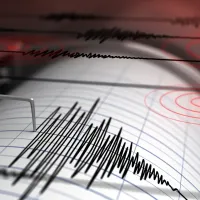Thanks to the Emission Trading System, a carbon fee will be reflected on companies that exceed the emission limit to be released into the atmosphere, while the competitiveness of companies that do not have to pay a carbon fee will increase.
The Medium Term Program (MTP), which determines the 3-year road map for the Turkish economy, was announced by President Recep Tayyip Erdoğan. In OVP; There were 297 policies and measures to be implemented under 10 main headings: growth, employment, price stability, balance of payments, financial stability, public finance, disaster management, green transformation, digital transformation, business and investment environment. Green transformation and digital transformation issues, which are among the main topics; It attracted attention due to its positive contribution to the fight against climate change and economic development. According to the green transformation title; In order to reduce the environmentally destructive effects of climate change, it was aimed to complete the preparations for the basic legislation that addresses climate change-related practices in a holistic manner. Completing the legal infrastructure of the Emission Trading System (ETS) and developing it in line with the European Union (EU) Border Carbon Regulation Mechanism (SKDM) were also among the targets of the MTP.
YILDIZ: “12 TONS OF CARBON EMISSIONS CAN BE PREVENTED IN 3 YEARS WITH KEP”
Making a statement about the Emission Trading System target in the MTP, TURKKEP General Manager Olcay Yıldız said, “It is very valuable for the future of both our country and the world that green transformation and digital transformation issues are included with such a broad perspective in the announced 3-year Medium Term Program. The Emission Trading System, which will soon become an indispensable part of international trade, will become one of the most important parameters in the fight against global warming. I believe that these policies will contribute positively to the Turkish economy and provide effective results in the fight against climate change. With the Paris Climate Agreement, it is the common responsibility of many countries, including Turkey, to reduce greenhouse gas emissions by 55 percent compared to 1990 levels by 2030 and to reach carbon neutrality by 2050.
As Turkey's trust institution TÜRKKEP, we have been sharing this responsibility as a mission since the day we were founded and contributing to the digital transformation processes of our country with our services. By digitizing many physical operations such as paper, toner, printing, archives and logistics, we protect nature and trees and significantly support institutions in reducing their carbon footprint. Thus, we offer institutions and organizations a sustainable opportunity to fight against the dangers of climate change and global warming. In a scenario where all companies use TÜRKKEP's e-transformation products, we may have prevented a serious carbon release into the atmosphere. For example; When a company with 1,000 employees digitalizes its payroll management, it saves 80 percent on printing, envelope and shipping costs and prevents approximately 12 tons of carbon emissions in 3 years. This is an amount equal to the oxygen provided by 480 mature trees in a year. Considering these inferences; “I invite all our companies and individuals who want to carry out their business processes faster, less costly and safer, and who want to minimize the damage to the environment, to the world of TURKKEP full of opportunities.” he said.
WHAT AWAITS COMPANIES WITH THE EMISSIONS TRADING SYSTEM?
The Emission Trading System limits the emissions to be released into the atmosphere within the scope of low-emission development models. ETS is one of the most important parameters used by the European Union in combating climate change. The Emission Trading System, which will soon become a natural part of international trade, ties the emissions that companies will release into the atmosphere to permits. With the limitation imposed on greenhouse gas emissions, the total emission amount of the sectors subject to ETS is determined. Within the framework of these limits, carbon allowances are given to organizations subject to the system. Each carbon allowance means permission to emit 1 ton of CO2. Companies within the scope of ETS;
They will be able to use their allocations to cover the total greenhouse gas emissions they cause.
Companies can choose to reduce their emissions or purchase carbon allowances from other companies.
By emitting less than the emission amounts allocated for them, companies will be able to sell their excess carbon allowances to companies in need and make a profit.
All companies subject to the ETS will be required to have carbon allowances to match their emissions.
Respond to your emissions
Companies that do not deliver the required amount of allocation will face penal sanctions.
THE COSTS OF COMPANIES EXCEEDING THEIR EMISSION LIMITS ARE INCREASING
According to official reports published on climate change, global warming caused by human-induced greenhouse gas emissions leaves approximately 3.5 billion people around the world vulnerable. It is stated that if emission trends continue like this, the world temperature increase may reach 3 degrees by 2100. It is aimed to limit the increase in global temperature to 1.5 degrees with the emission reduction steps included in the Paris Climate Agreement, which was approved by 192 countries, including Turkey.
In line with emission reduction targets, a "transition to low-emission systems" transformation needs to be experienced in all sectors. Companies that produce and make profits from their activities in a way that causes greenhouse gas emissions can cause environmental and health problems. With the carbon fee application implemented to prevent this problem, the damages caused by greenhouse gas emissions are reflected on the relevant companies in the form of carbon fee or carbon tax. With the Emission Trading System, it is aimed for companies to invest in low-emission systems that will provide lower costs. Thanks to the Emission Trading System, the aim is to increase the competitiveness of companies that do not have to pay carbon fees, while the costs of companies that exceed the emission limit to be released into the atmosphere increase.






























